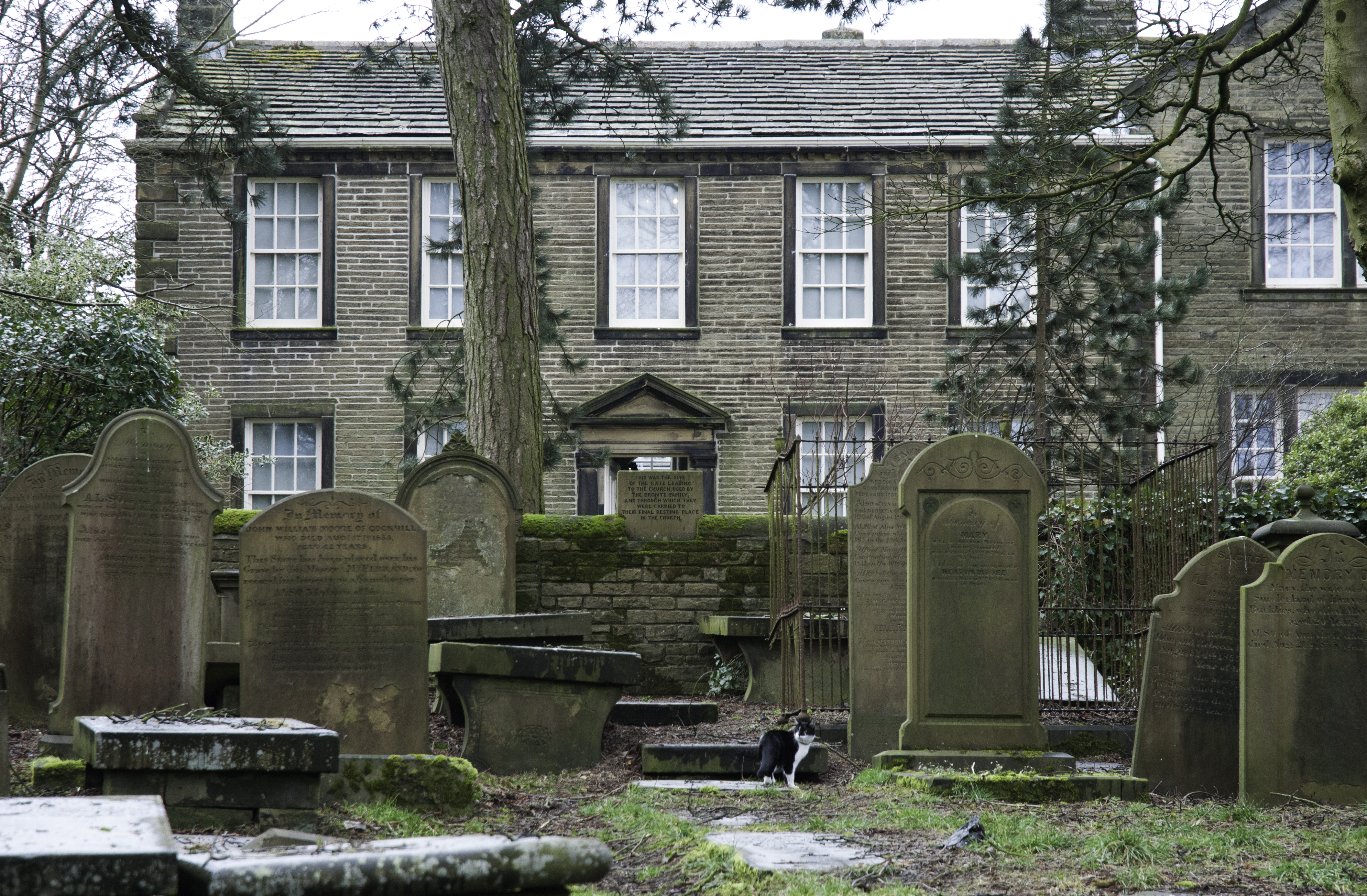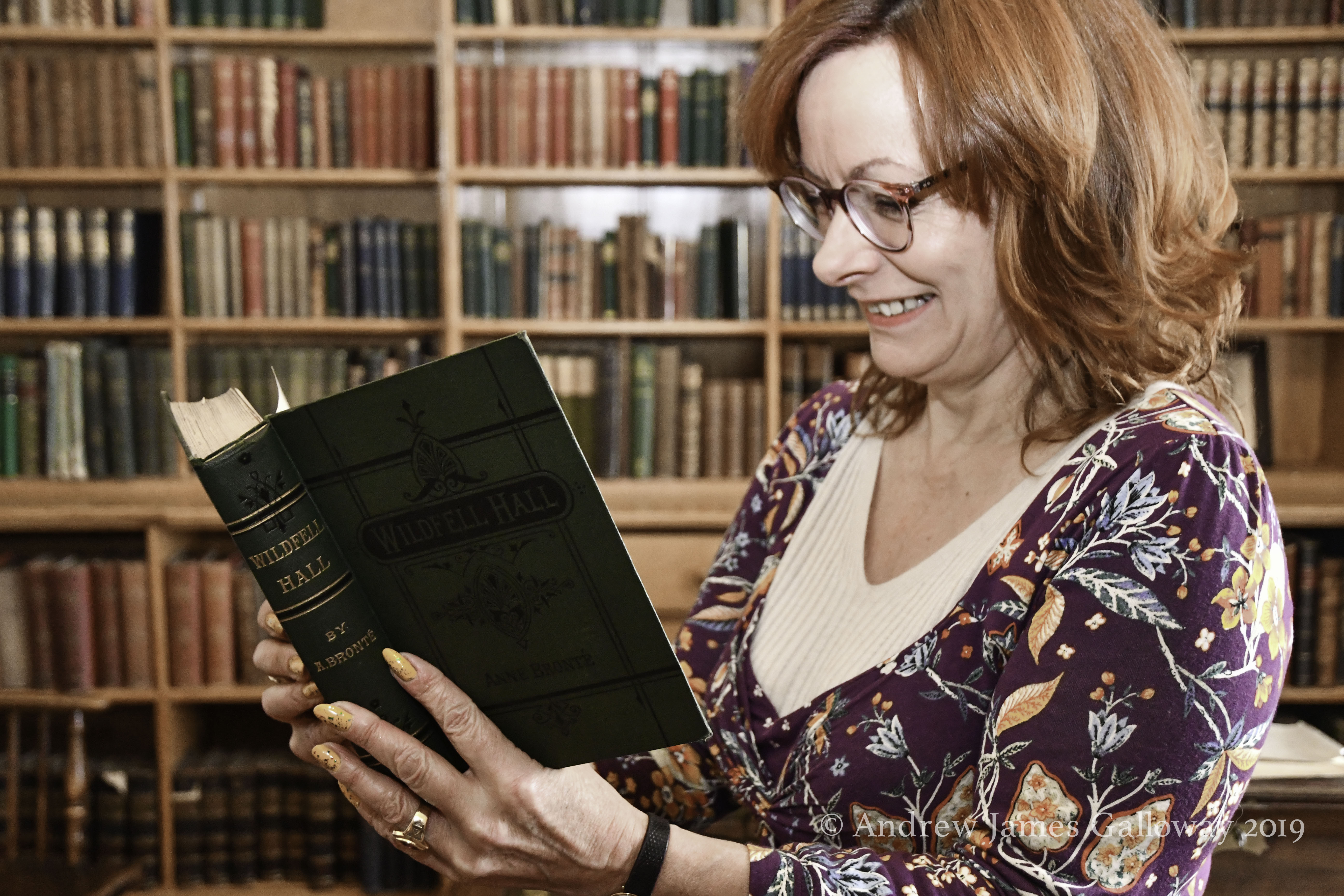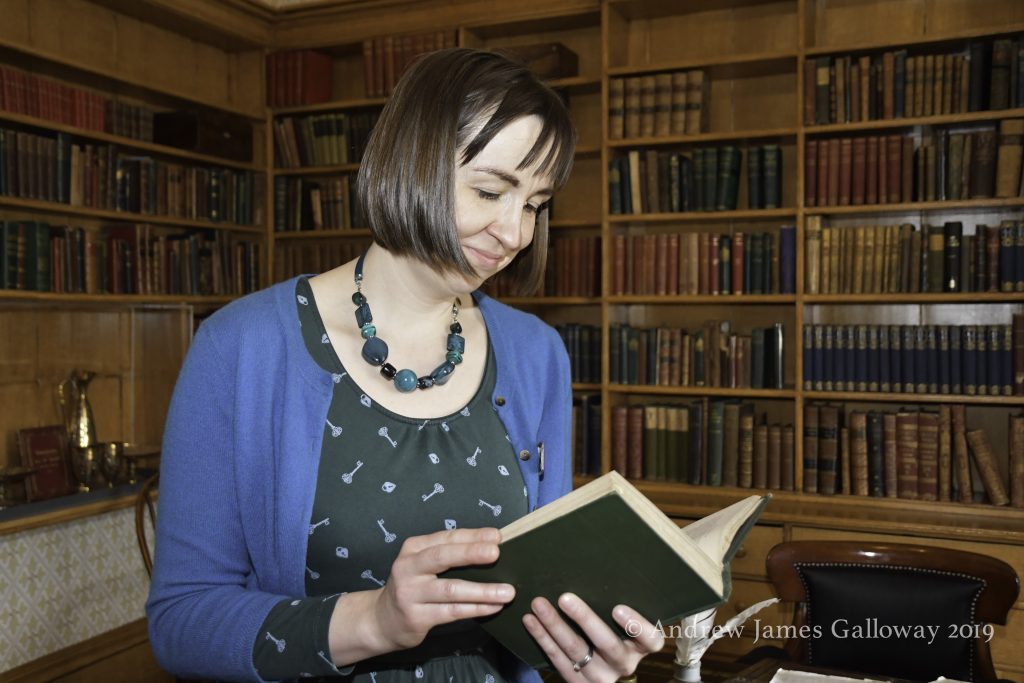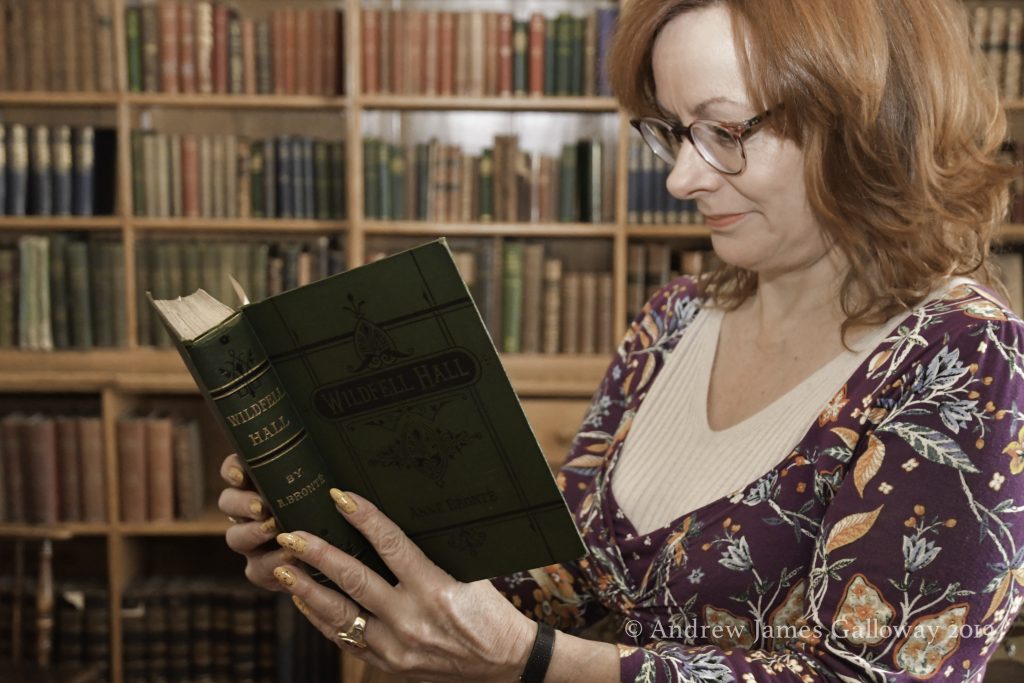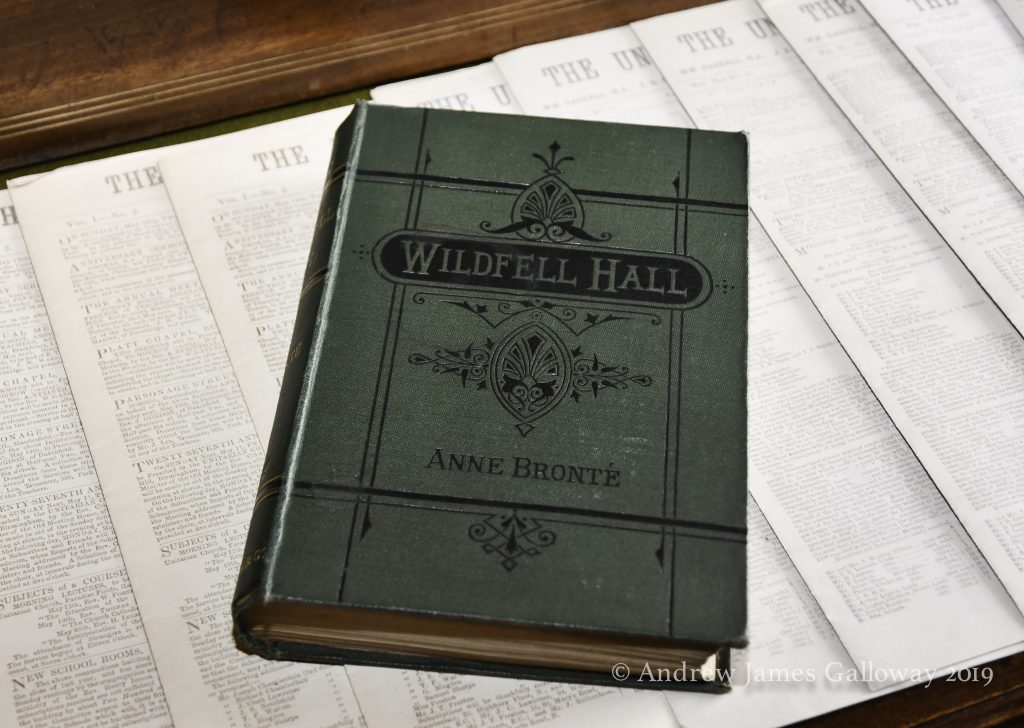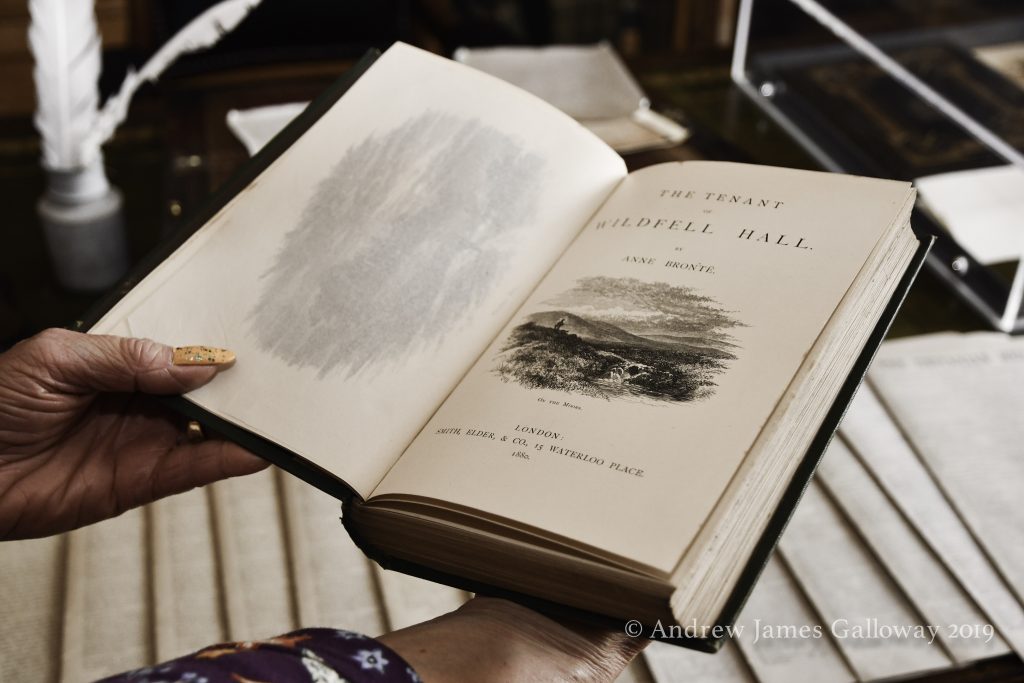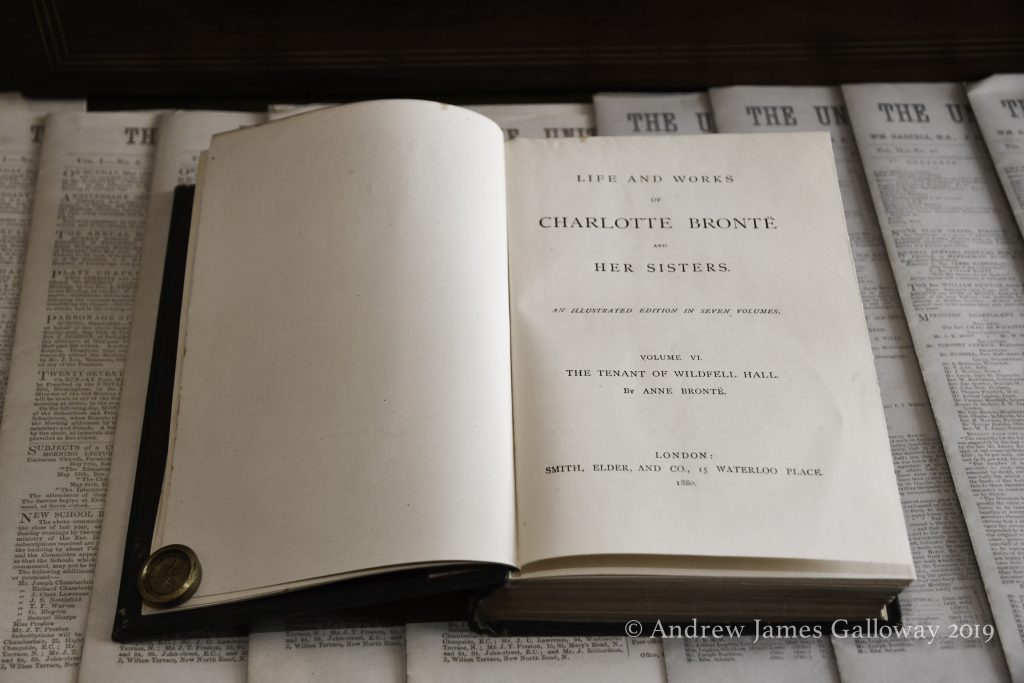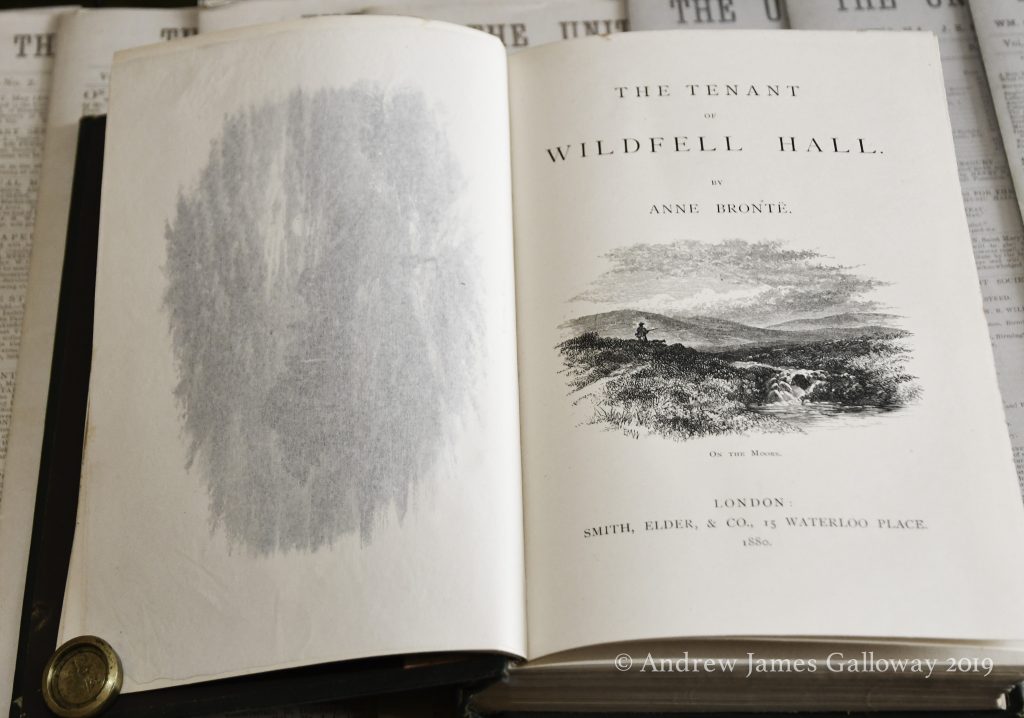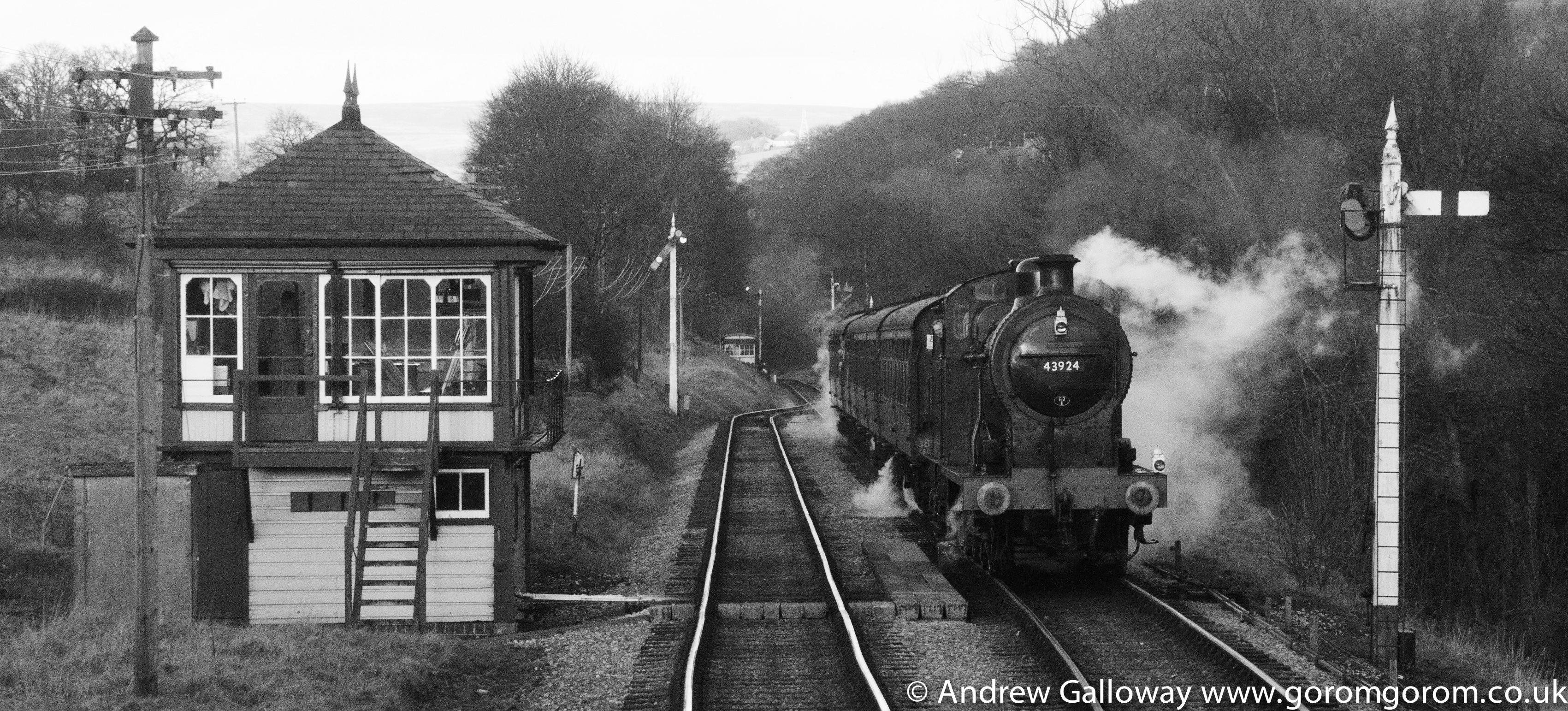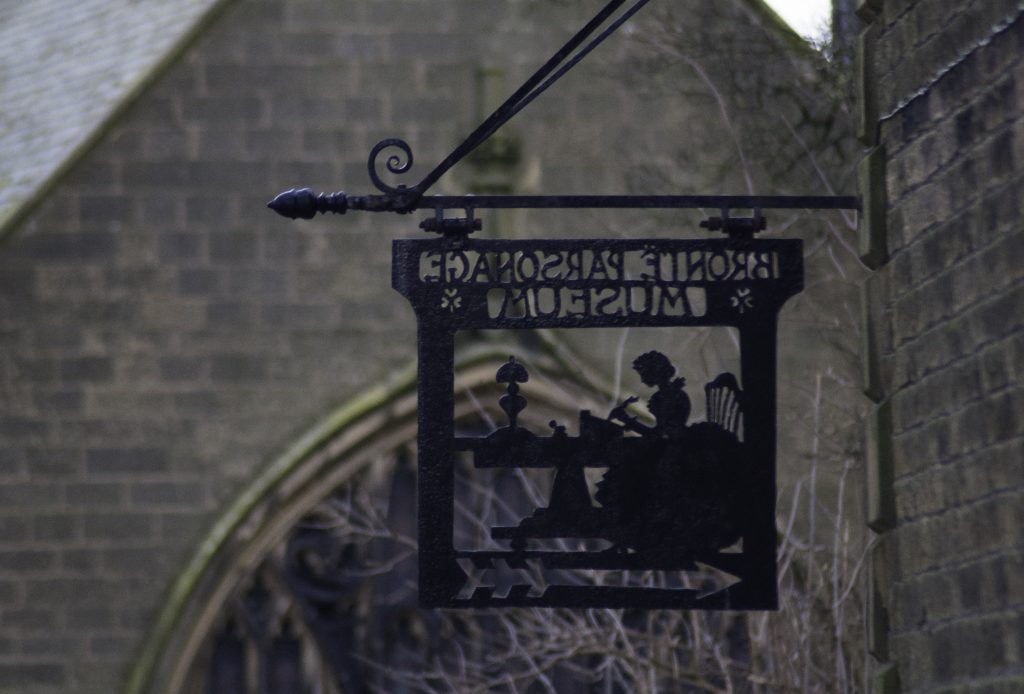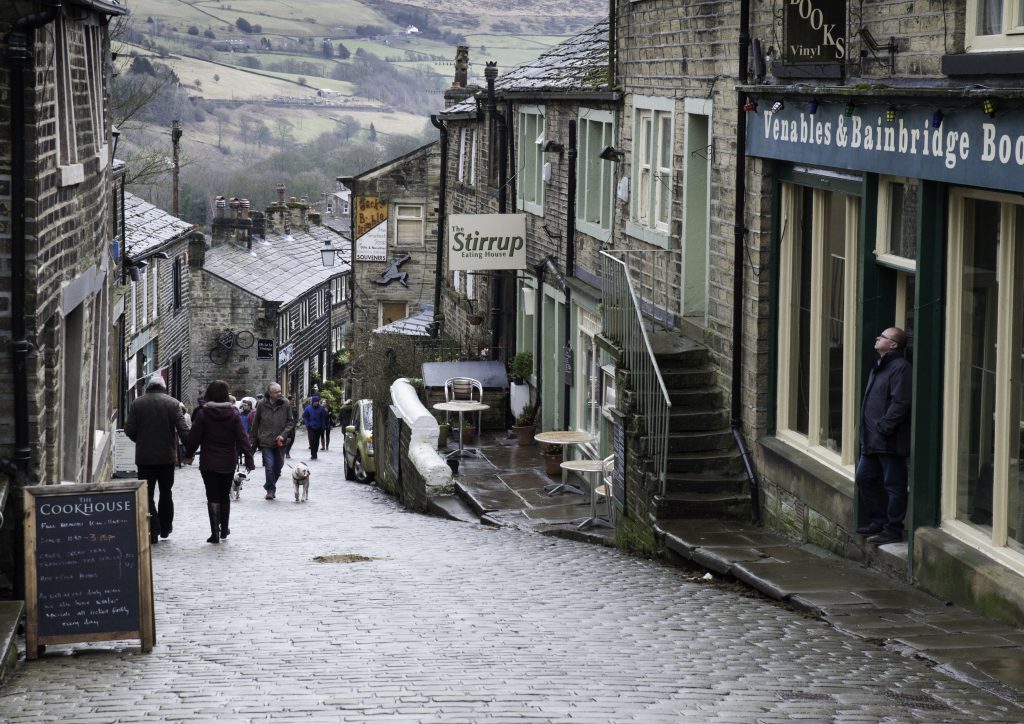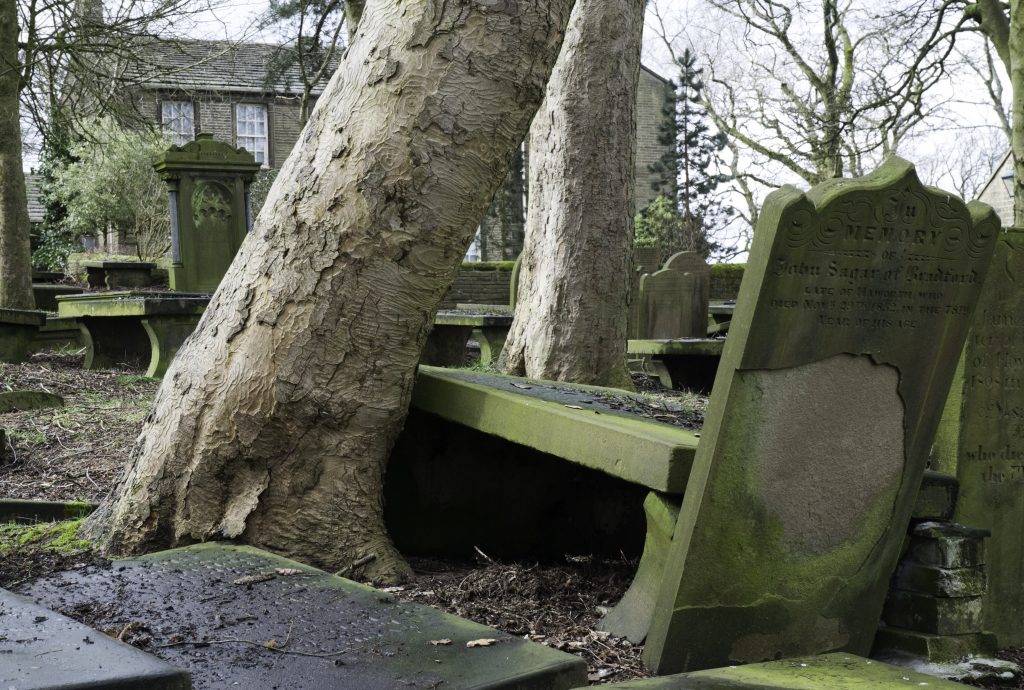It took twenty-eight years for me to walk beyond the confines of the cemetery wall of Saint Michael and All Angels, Haworth. In the wake of a rather acrimonious divorce in 2005 I fell upon the mercy of a local “under 40’s” Rambler’s club, an incidental collection of divorcees, serial-singletons, misanthropists and social misfits (many of whom I have come to know and love as very good friends)[1]. The debt of gratitude I owe to this diverse band of characters is beyond measure, for they enabled me to re-discover my love of the British countryside, and vicariously, an essential part of me own being. It was in attending a walk organised by a member of this group that I found myself back in Haworth, where I found myself assailed by memories long locked away in the confines of my subconscious. The walk that day was from the Parsonage, across Penistone Hill and along Sladen Beck to the “Meeting of the Waters” from thence to the ruined Elizabethan farms below Withens Heights: lower, middle and top, returning via Ponden Clough and Hall. That was my first visit to Top Withens and the beginning of a fascination that persists to this day.
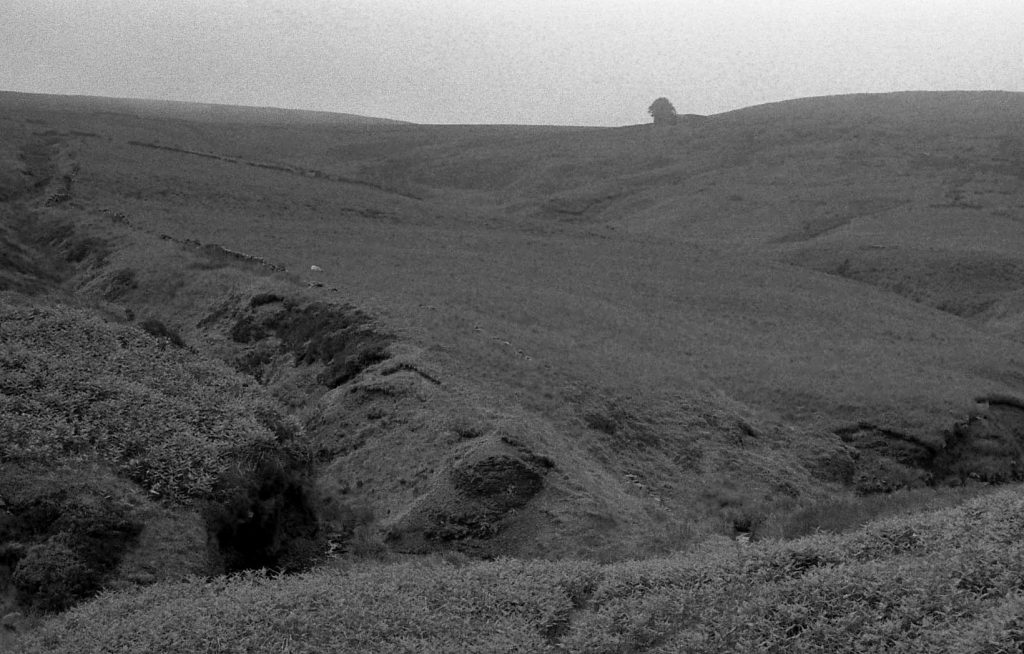
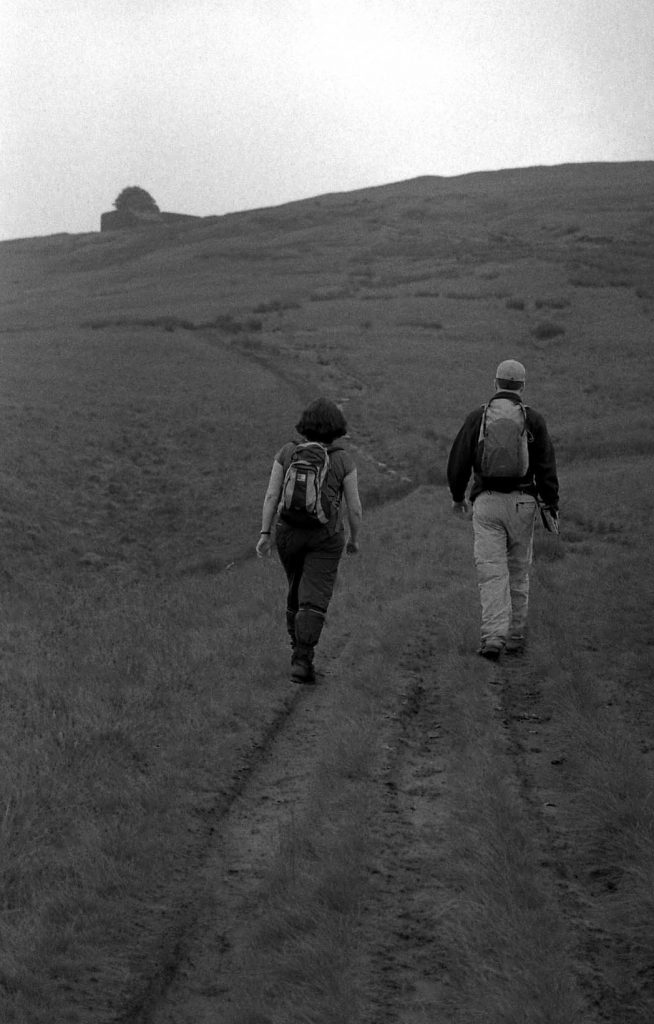
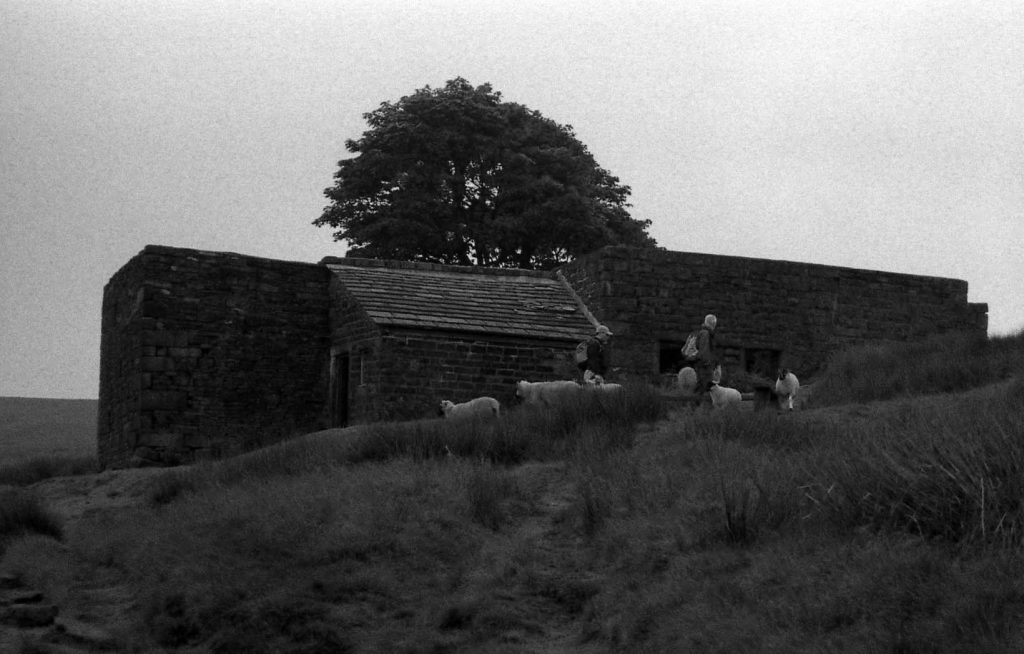
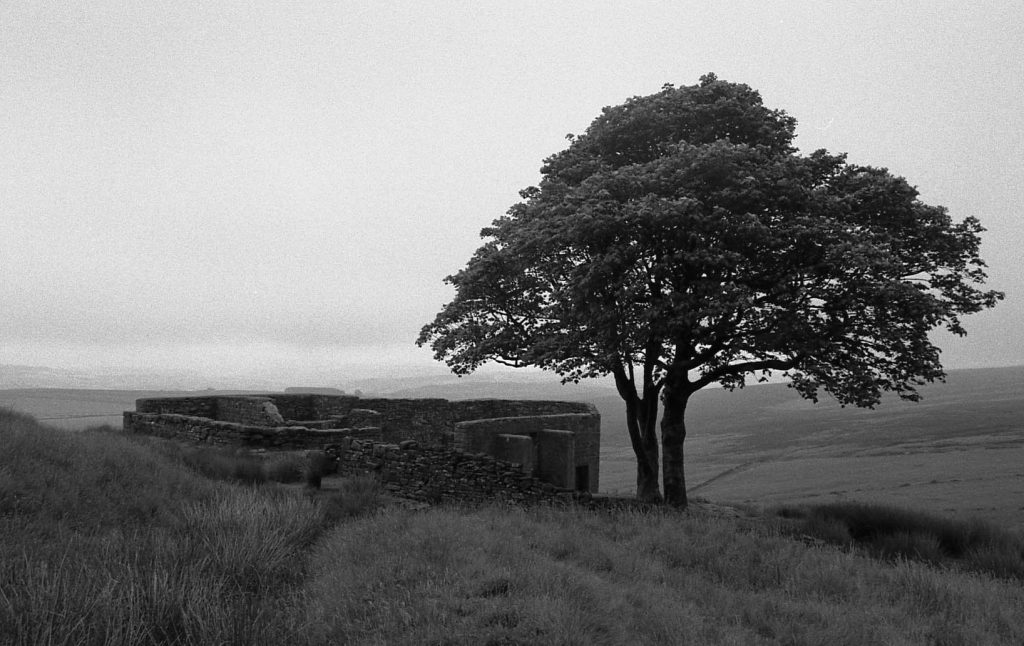
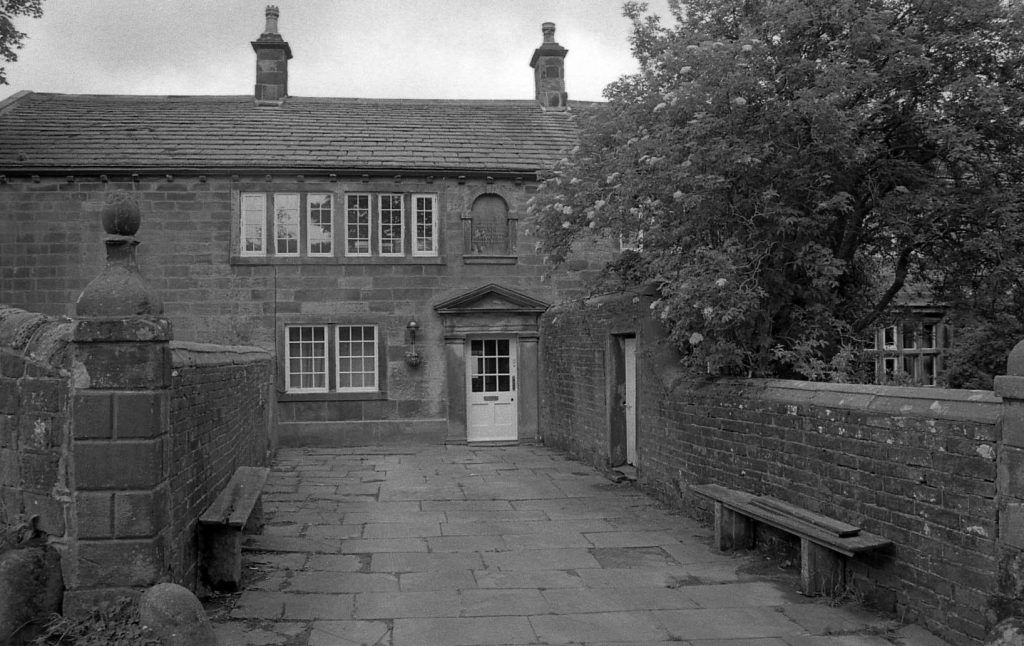
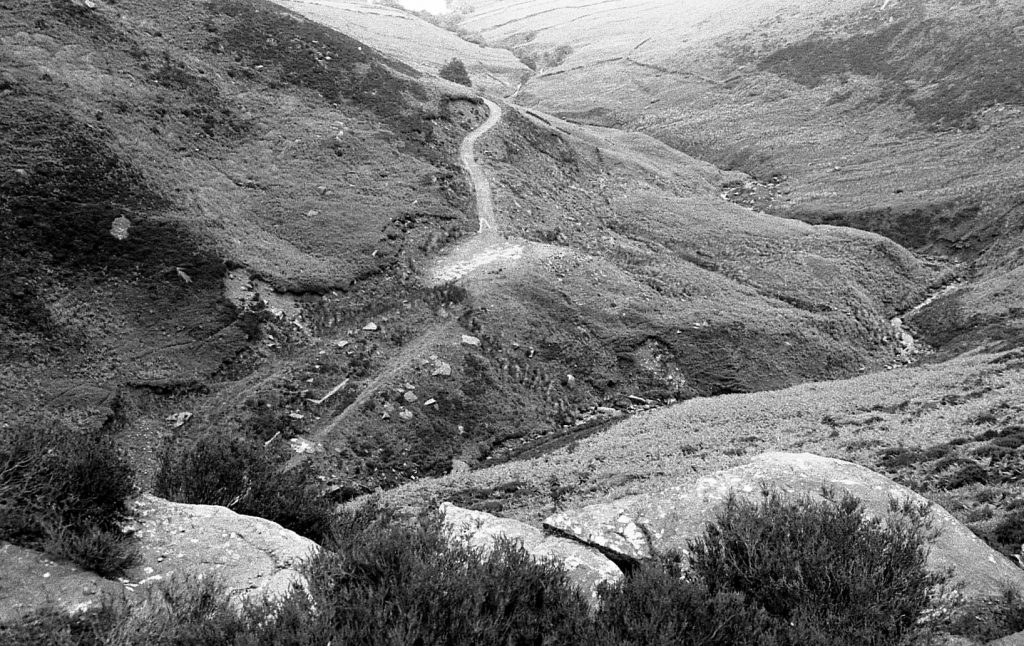
Walk to Top Withens 2007
On the chilly March morning I had taken the train to Haworth, I found the stone solidity of the Brontë Parsonage Museum a haven of tranquillity, peaceful in early spring when the chattering crowds of high season had been replaced by the ceaseless whispers of the wind echoing throughout the house, through the stone floored hallway, into the parlour where the flattering George Richmond portrait of Charlotte hangs above the fireplace and where the three sisters would make their evening perambulations around the mahogany dining table. It was at this table that from their early adolescence, the four Brontë siblings would indulge their favourite pastime of writing fictional accounts of their heroes. Characters at first taken from contemporary accounts the children had read in Blackwood’s Magazine, a satirical periodical of the time; Charlotte’s favourite the Duke of Wellington, Emily’s Sir Walter Scott, but later developing in imaginative complexity into the Angrian and Gondal Sagas, which would continue to be the foundation of the Brontë’s literary efforts into much later life[i]. In her acclaimed biography of the Brontës, Juliet Barker cautions against fuelling the myth of the Brontë’s nascent literary genius, preferring to see the ‘Juvenilia’ as the product of a mutual, creative endeavour; a means of expression for young, imaginative minds.
“It is easy also to over-emphasize the maturity of the young Brontës by drawing attention to the complexity of their childhood writings, the elaborate and exotic descriptive passages, the wide range of references and the rich vocabulary used. Less often mentioned is the highly imitative nature of much of the writing, in both style and subject matter. Their slap-dash writing, appalling spelling and non-existent punctuation well into their late teenage years is usually glossed over, as is the frequent immaturity of thought and characterisation.”[
Barker, Juliet, (2010) The Brontës, second edition, Abacus, pp178
What is undoubtedly much more fascinating than the literary merit and sheer volume of the writing produced, is the level of preoccupation exhibited by the Brontës in their imaginary worlds, an absorption that in the case of Emily would continue until her death in 1848 and which often proved a barrier to integration into everyday life.
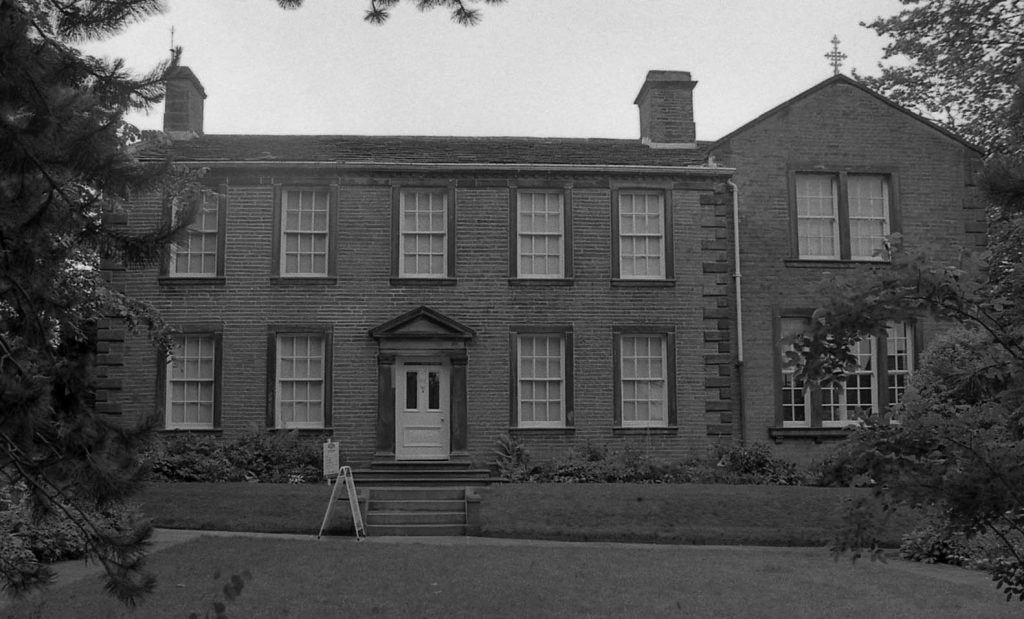
The Brontë children were for the most part educated at home by their father. Apart from her brief, and by all accounts traumatic, sojourn of six months at the Cowan Bridge Clergy Daughters’ School, Emily had received no tuition at a place of formal education. Concerned by this Patrick arranged for Emily to be sent at the age of seventeen to Roe Head School, near Mirfield, where another of his daughters, Charlotte had attended as a pupil in 1831[iii]. Patrick no doubt thought it provident that Charlotte had recently been made the offer of a teaching position at the school by her former mistress, Miss Wooler. His two eldest daughters would then move to Roe Head together. Unfortunately, despite the presence of her sister at the school, Emily found integration difficult. The constraints of the school routine, so different to the freedoms she had valued at the Parsonage, soon became a challenge, and she began to withdraw from her fellow pupils, not least because of her self-consciousness at her physical and mental maturity in comparison to the majority of her classmates and her unwillingness to engage in what she no doubt saw as the childish chatter in the dormitory. But the most grievous restrictions imposed upon Emily were undoubtedly her geographical separation from the moorlands upon which she loved to walk, and the lack of private time in which to indulge her Gondal fantasies. Though visible from the dormitory windows of Roe Head, the hills and moors surrounding Mirfield were strictly out-of-bounds for pupils, more by virtue of the rigorous daily schedule of the school.
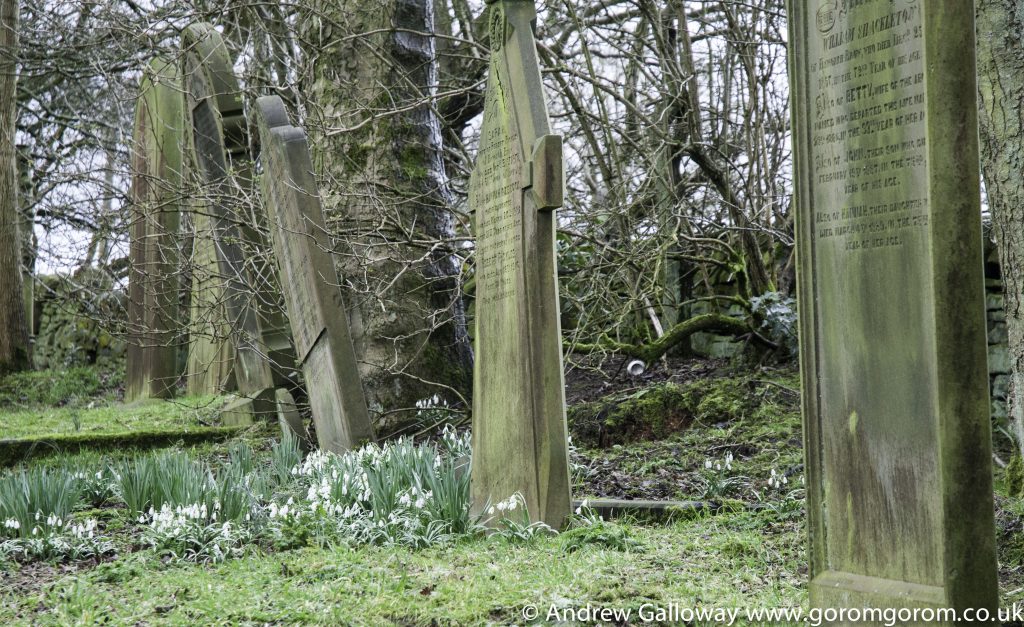
Unable to communicate with her sister Anne, the chief co-conspirator in the Gondal sagas, and having little time and privacy with which to put down in writing her imaginative thoughts, a cathartic release that had always been available to her at the Parsonage, Emily became physically and emotionally ill. Within three months of moving to Roe Head she was permanently sent home. This was a pattern that would reappear in the summer of 1838, when at the age of twenty Emily took up a teaching post at Law Hill School, near Halifax. In a letter to her friend and confidant, Ellen Nussey, Charlotte wrote of the rigorous work schedule at the school.
“I have had one letter from [Emily] since her departure it gives an appalling account of her duties – Hard labour from six in the morning until eleven at night. With only one half-hour of exercise between – this is slavery I fear she will never stand it.[iv]”
Despite this ‘slavery’ Emily did find time to write poetry during her first term at Law Hill, much of which based on Gondal themes but noticeably coloured with the language of exile and loss. An untitled poem dated 11 November 1838 contains the following lines[v]:
In the gloom of a cloudy November
They uttered the music of May –
They kindled the perishing ember
Into fervour that could not decay
Awaken on all my dear moorlands
The wind in its glory and pride!
O call me from valley and highlands
To walk by the hill-river’s side!
….
But lovelier than corn-fields all waving
In emerald and scarlet and gold
Are the slopes where the north-wind is raving
And the glens where I wandered of old –
….
For the moors, for the moors where the short grass
Like velvet beneath us should lie!
For the moors, for the moors where each high pass
Rose sunny against the clear sky!
For the moors, where the linnet was trilling
Its song on the old granite stone –
Where the lark – the wild skylark was filling
Every breast with delight like its own.
There is no evidence to suggest that Emily wrote anything during the second term at Law Hill, an indication perhaps of her failing mental and physical health. By the Easter of 1839 she had once again returned to the familiar haven of the Parsonage at Haworth and would never again earn money through employment. Her sister Charlotte described Emily’s discomfort with pedestrian reality of working life in a preface to the 1850 edition of ‘A Selection of Poems by Ellis Bell’[vi].
“Liberty was the breath of Emily’s nostrils; without it, she perished. The change from her own home to a school, and from her own very noiseless, very secluded, but unrestricted and inartificial mode of life, to one of disciplined routine (though under the kindliest auspices), was what she failed in enduring.”
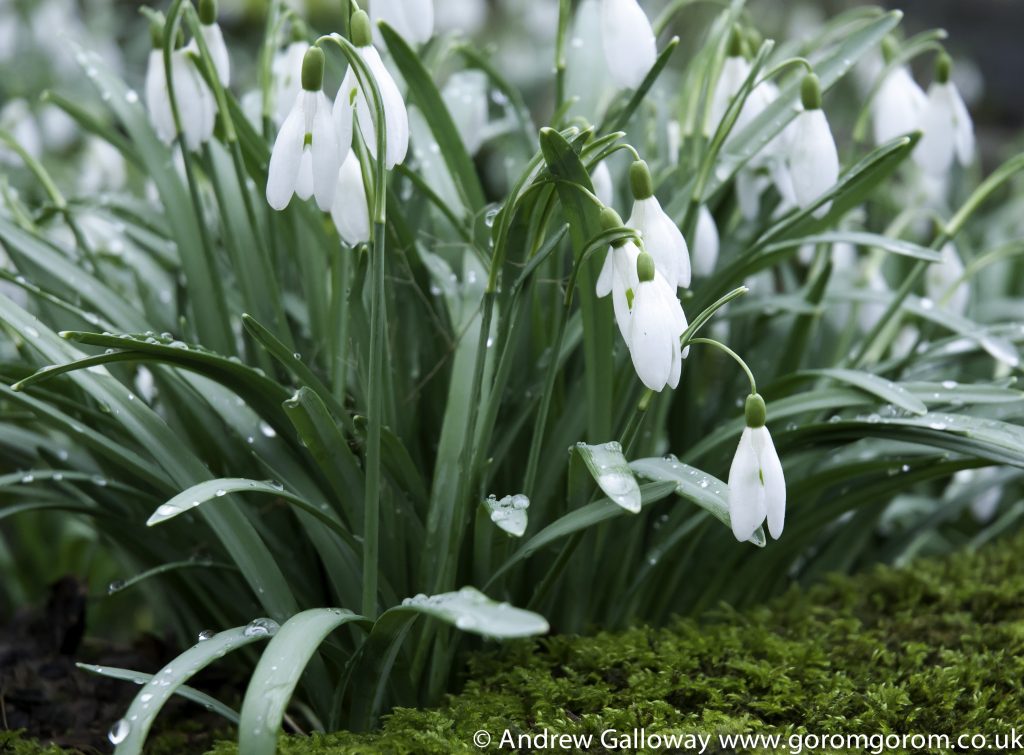
Even after the achievement of having written Wuthering Heights, which she completed in spring of 1846, Emily reacted with strong feelings of rejection, perhaps understandably, to the mostly lukewarm responses the novel received from prospective publishers. Emily once again withdrew into her fantasy Gondal world, producing several melancholic poems in partnership with her sister Anne.
It would perhaps be disingenuous to throw twenty-first century psychoanalytical labels around when considering the lives of those who lived in the nineteenth century, but it is evident that all of the Brontë siblings suffered considerable trauma as children and had to face the consequences of this in later life. Emily’s mother died when she was just three years old. The subsequent deaths from consumption of the two eldest Brontë sisters, Maria and Elizabeth not four years later and her experiences of deprivation and, what by all accounts was psychological torture and near starvation at the Cowan Bridge Clergy Daughters’ School, could only have had a profoundly negative effect on Emily. To what extent these traumatic childhood events affected the Brontë children is perhaps best seen in the narratives of their fiction. Juliet Baker points out[vii] that orphans and motherless children were a common feature in both the childhood writings and in published works. In the case of Emily, her novel Wuthering Heightsis populated almost entirely by such orphans and motherless children. Heathcliff’s parentage is never explained and he is presumed to be an orphan, found on the dockside in Liverpool. Both Mr and Mrs Earnshaw are dead by the end of the fifth chapter, leaving Cathy and Hindley without parents and Heathcliff orphaned for a second time. Hindley’s wife Frances dies in childbirth leaving Hearton motherless, as does Cathy leaving the young Catherine in the same predicament. Linton’s mother, Isabella (Edgar Linton’s sister) dies twelve years after his birth of what is implied to be consumption, and ultimately, Edgar and Heathcliff themselves die leaving the young Catherine and Hareton, whose unison in marriage brings the novel to a conclusion, without parentage. After a period of thirty years over which the narrative takes place, Catherine and Hearton are left as the only survivors of the two families.
If we assume then the profound effect of childhood trauma on the Brontës, it is perhaps miraculous that as children they were able to employ their imaginative powers to nurture each other and to overcome what trauma they had experienced to the extent that they were, in later life, able to produce such remarkable works of fiction. If there was a flaw in the childhood strategy, it was that once separated from the familial unit, their primary source of nurture and self-identity was not available to them. This being so, one can only imagine the magnitude of grief experienced by Charlotte when first Branwell, then Emily and finally Anne died of consumption within seven months of each other.
To be continued in Chapter 3 …..
- [i]Barker, Juliet, (2010) The Brontës, second edition, Abacus
- [ii]ibid, pp178
- [iii]ibid, pg262
- [iv]ibid, pp343, Charlotte Brontë’s spelling and punctuation.
- [v]Gezari, Janet (ed. 1992), Emily Jane Brontë, Collected Poems, Penguin Books Ltd.
- [vi]Brontë, Charlotte 1850, a preface to ‘A Selection of Poetry by Ellis Bell’, qu. in Barker, Juliet, (2010) The Brontës, second edition, Abacus, pp274
- [vii]Barker, Juliet op. cit. pp160
[1]I add the quotation marks of cynicism as an acknowledgement of the inevitable progress of time, which has rendered, in Logan’s Run fashion, many of the clubs members well above the critical age threshold. We have yet to begin removing elder members with pleasure-inducing toxic gas.

